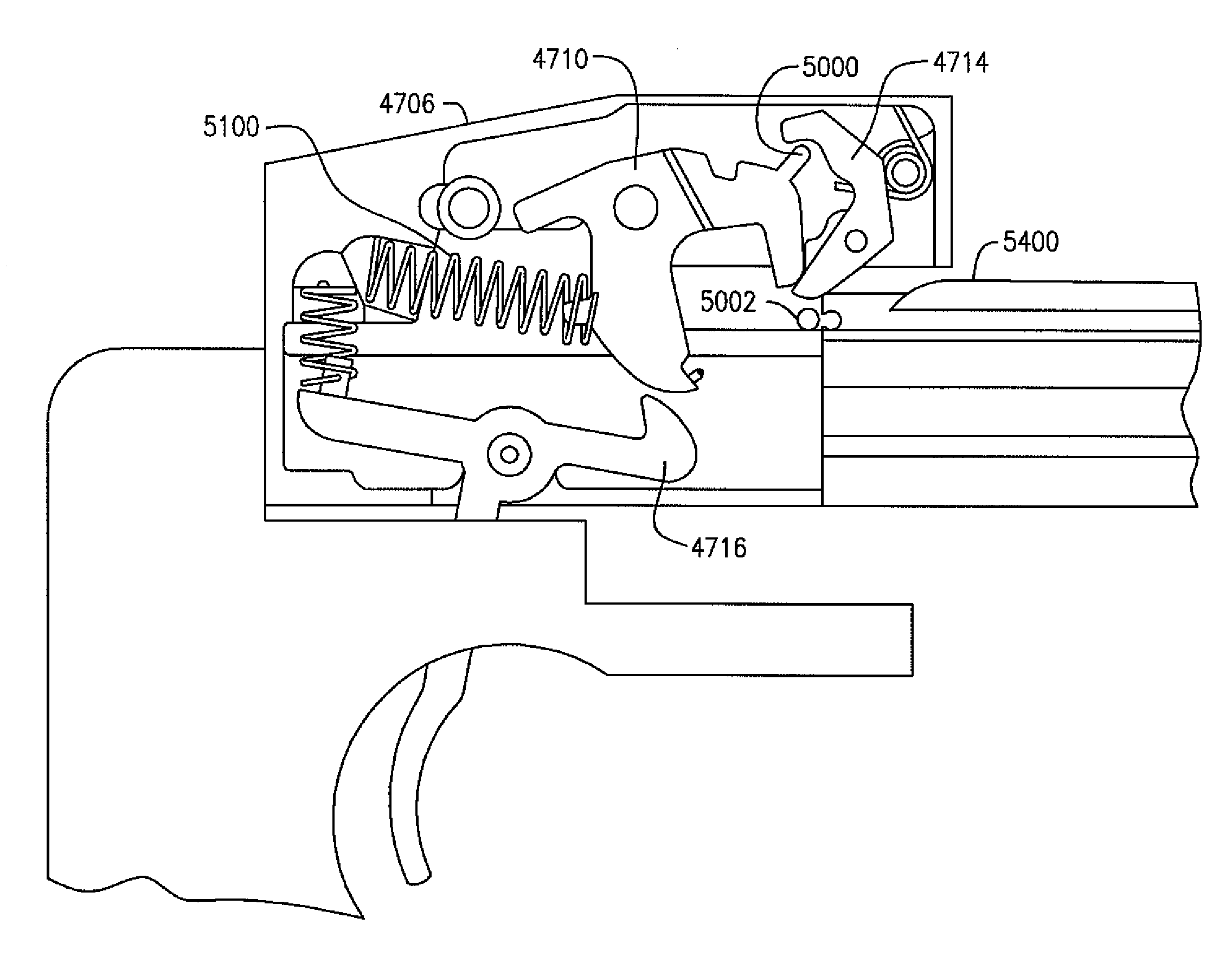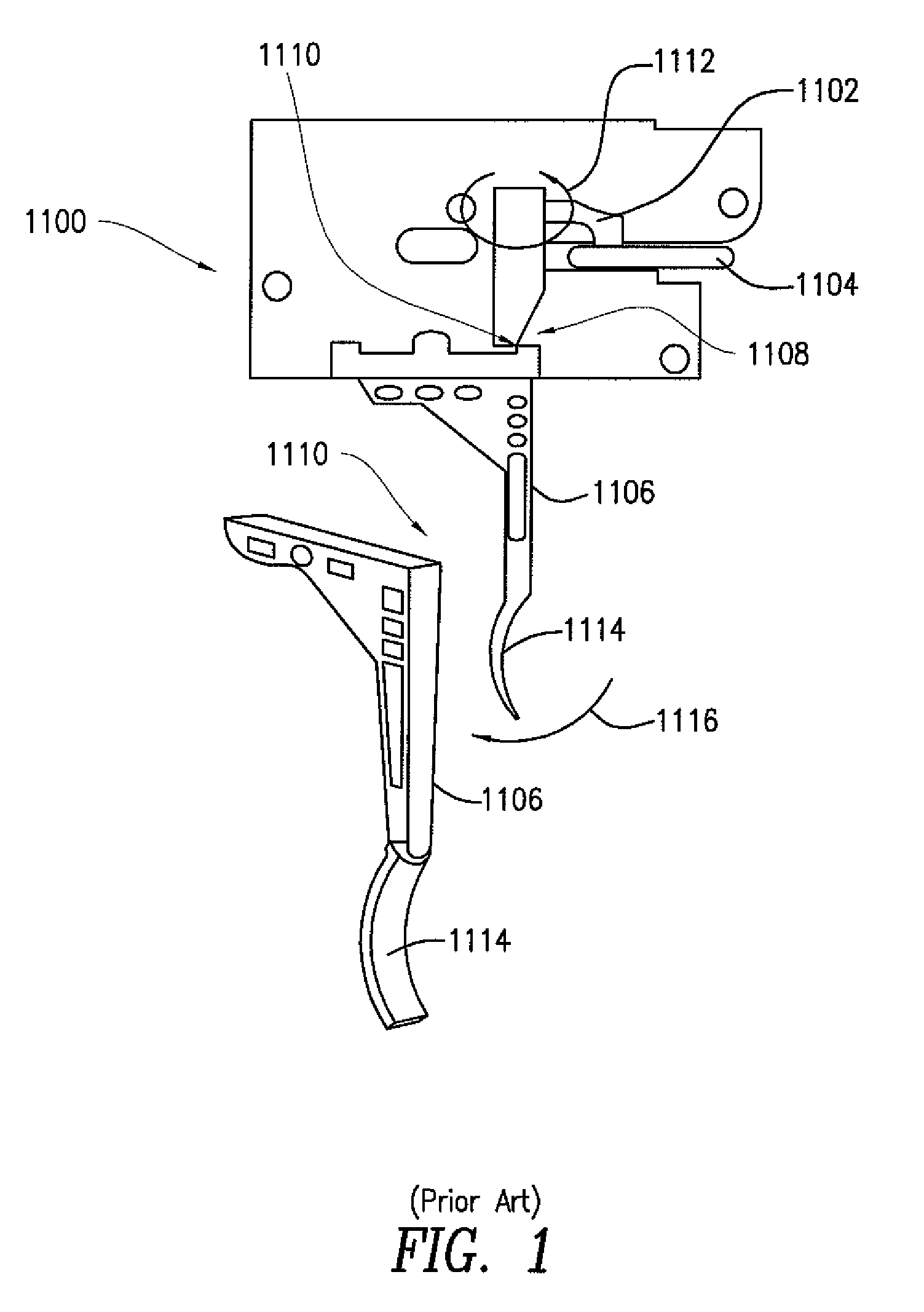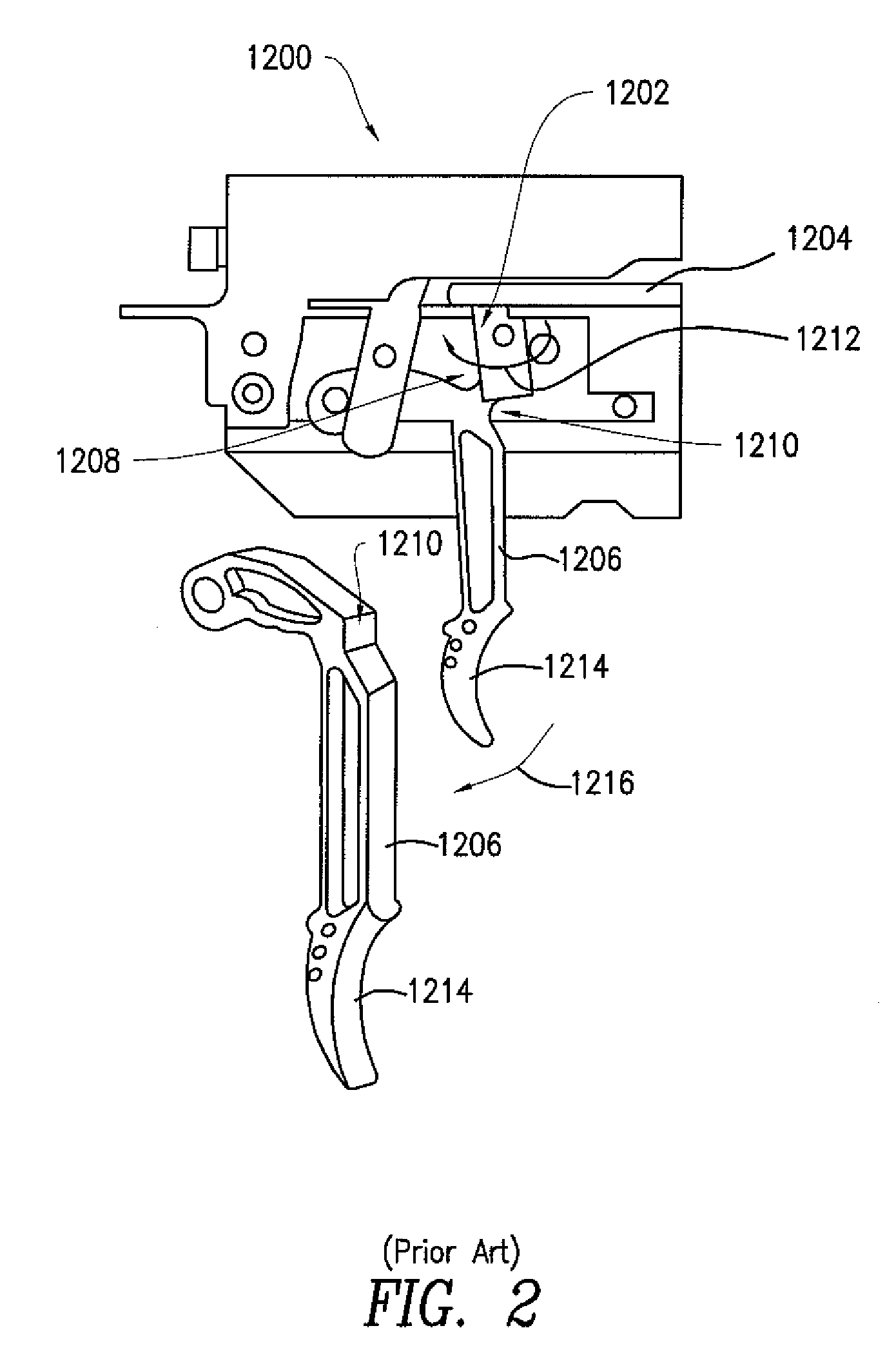Crossbow
a crossbow and crossbow technology, applied in the field of archery devices, can solve the problems of large storage space, crossbows with stock and transverse limbs, and safety concerns, and achieve the effects of reducing the risk of injury, reducing the safety of use, and increasing the risk of injury
- Summary
- Abstract
- Description
- Claims
- Application Information
AI Technical Summary
Benefits of technology
Problems solved by technology
Method used
Image
Examples
Embodiment Construction
[0032]Referring now to FIG. 4, a crossbow 1400 in accordance with embodiments of the present disclosure is partially shown, in top view. The crossbow 1400, which in FIG. 4 exhibiting a shooting configuration, may have a fore end 1402 and a rear end 1404, and may include a gripper 1406 positioned in a vicinity of the rear end 1404, a stock 1408 coupled to extending from the gripper 1406 and toward the fore end 1402, and limbs 1410 coupled to the stock 1408, at respective sides 1412, 1414 thereof, and in a vicinity of the fore end 1402. As will be described below, the crossbow 1400 may further include a limb support mechanism 1416 via which the limbs 1410 may be both moveable and selectively collapsible relative to the stock 1408. As will also be described below the crossbow 1400 may include a limb actuator 1418, the limb actuator 1418 being interoperable with the limb support mechanism 1416 for permitting a user of no greater than average strength to quickly and easily selectively ca...
PUM
 Login to View More
Login to View More Abstract
Description
Claims
Application Information
 Login to View More
Login to View More - R&D
- Intellectual Property
- Life Sciences
- Materials
- Tech Scout
- Unparalleled Data Quality
- Higher Quality Content
- 60% Fewer Hallucinations
Browse by: Latest US Patents, China's latest patents, Technical Efficacy Thesaurus, Application Domain, Technology Topic, Popular Technical Reports.
© 2025 PatSnap. All rights reserved.Legal|Privacy policy|Modern Slavery Act Transparency Statement|Sitemap|About US| Contact US: help@patsnap.com



